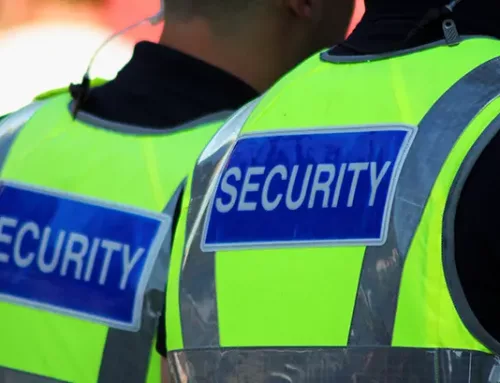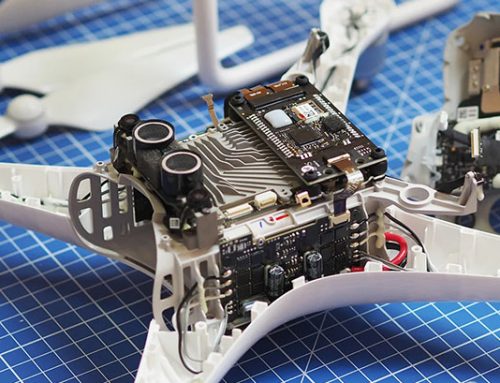As we collectively breathe a sigh of relief, finally starting to emerge from the winter chill and looking forwards to welcoming the incoming warmth of spring, the anticipation for outdoor events and festivals begins to build. With the promise of music, food, and community spirit, these events bring joy and excitement. However, as we revel in the approaching event and festival season, it is essential to shine a spotlight on a critical aspect of security often overlooked: Counter Uncrewed Aircraft Systems (CUAS).
In recent years, the proliferation of consumer drones has added a new layer of complexity to event security. While drones have undoubtedly enriched our lives for a number of reasons, they can also pose potential threats when misused, whether through shear negligence or malicious intent. Whether it’s issues related to privacy, safety hazards, individuals attempting to capture the perfect shot of their favourite band, or the illicit delivery of prohibited items evading traditional gate search procedures, the need for comprehensive air security measures, including CUAS, is more significant than ever.
Typical threat scenarios may include:
CUAS technology supported by robust policies and procedures plays a crucial role in mitigating the risks associated with unauthorised drone activity. The technical systems are designed to detect, track, and identify potentially unwanted drones, ensuring the safety and security of event attendees. As the popularity of outdoor events and festivals continues to grow, integrating CUAS into standard security protocols is paramount.
Several high-profile incidents around the world underscore the importance of incorporating CUAS into security planning. Instances range from drones trespassing into restricted airspace during significant events to instances where the concept of restricted airspace was entirely disregarded, particularly in concerts and festivals. These occurrences serve as stark reminders of the potential consequences of overlooking this critical aspect of security.
One such incident occurred in July 2022 during a renowned open-air music festival at Brighton Beach, UK where a drone infiltrated the airspace, subsequently flying over the crowd and crashing onto the stage where Fatboy Slim was performing. The lack of a robust CUAS system allowed the drone to go undetected for some time preceding the collision and until it was too late. Fortunately, the incident ended without major consequences, but it serves as a wakeup call for the need to prioritise air security measures.
In a separate incident in June 2023, a music enthusiast received a fine exceeding £1,000 for flying his drone over the Download Festival at Donnington Park and near a landing plane at the East Midlands Airport. Despite operating within a designated Flight Restriction Zone (FRZ), the drone operator’s actions underscored a lack of foresight and a willingness to take considerable risks solely for the sake of capturing a shot.
Detecting such activities is crucial not only to mitigate risks but also to prevent potential economic losses and safeguard the reputation of the organisers and other involved parties.
June 2023
Drone flown at Download Festival and near landing plane at major UK airport
July 2022
Drone flown over Brighton beach which subsequently crashed on stage during ‘Fat Boy Slim’ concert.
To ensure the success and safety of outdoor festivals, event organisers must embrace a proactive approach to security that includes CUAS as an integral component. The forthcoming Terrorism Protection of Premises Bill, commonly known as ‘Martyn’s Law,’ anticipated to be enacted in 2024, will legally mandate such considerations. Below is a brief overview of the proposed bill.
Aerial Defence Ltd takes a central role in this endeavour, offering a holistic approach with services seamlessly blending into current procedures. This encompasses the implementation of policies, procedures, and response plans, coupled with the temporary installation of CUAS monitoring equipment. This ensures an elevated level of security without causing disruptions to the established operational framework.
As we look forward to the warmer months and the vibrant energy of festival season, let’s reconsider what routine safety and security now looks like. Integrating CUAS into standard security measures is not just a precautionary step; it is a commitment to ensuring that the joy of these events remains unmarred by potential threats from the sky. Together, we can celebrate safely and responsibly, making every festival an unforgettable experience for all the right reasons.
Many times we have heard the expression “We will learn from what went wrong…”. Ensure that your public event doesn’t become the next one forced to utter this phrase under scrutiny. #SecurityFirst #EventSafety #CUAS #FestivalSeason
Terrorism Protection of Premises Bill (Martyn’s Law) – A Duty to Protect
“Martyn’s Law” refers to proposed legislation in the United Kingdom aimed at enhancing public venue security. The law is named after Martyn Hett, one of the victims of the Manchester Arena bombing in 2017. It seeks, amongst other things, to address the security vulnerabilities of public spaces and venues by introducing measures to mitigate the risks of terrorism.
Figen Murray, the mother of Martyn Hett, began the campaign for Martyn’s law together with Survivors Against Terror. She proposed that venues should engage with freely available counter-terrorism advice and training, should be required to undertake a vulnerability assessment of the area to which the public have access, and to have a mitigation plan for the risks created by any vulnerabilities.
The key aspects of the proposed bill include:
- 1
Mandatory Security Measures – The law proposes making certain security measures mandatory for public venues, such as concert halls, stadiums, and shopping centres. This may include requirements for thorough security assessments, controlled access points, and the presence of security personnel.
- 2
Communication and Coordination – Martyn’s Law emphasises the importance of effective communication and coordination between venue operators, local authorities, and emergency services. This is intended to ensure a swift and coordinated response in the event of a security threat.
- 3
Training and Preparedness – The legislation aims to enhance the training of venue staff and management in security awareness and response protocols. This includes preparing them to recognise and respond to potential threats effectively.
- 4
Public Awareness – Martyn’s Law recognises the role of public awareness in enhancing security. It may require venues to communicate security measures to the public and encourage vigilance among attendees.
Additional Information can be viewed here – https://www.protectuk.police.uk/martyns-law/martyns-law-overview-and-what-you-need-know along with the draft bill viewable here – Terrorism (Protection of Premises) Draft Bill
Reliable Detect, Track and Identify (DTI)

The detection equipment Aerial Defence Ltd uses has been tested to the NPSA technical standard and is listed in the Catalogue of Security Equipment. The Catalogue of Security Equipment (CSE) is available to help security practitioners to identify appropriate physical security equipment. The CSE provides a range of products that have been evaluated against specific NPSA security standards and the performance rating achieved.
The National Protective Security Authority (NPSA) is the UK’s National Technical Authority for physical and personnel protective security, maintaining expertise in counter-terrorism and state threats. NPSA is a part of the Security Service, MI5, and has absorbed the responsibilities of the Centre for the Protection of National Infrastructure, but with a broader remit; reflecting the fact that the threats the UK faces today extend far beyond critical national infrastructure.

If you are involved in UK Law Enforcement, Crowded or Public space events or Counter-Uncrewed Aircraft Systems (CUAS) and wish to gain further insights into the services we offer, please feel free to contact Aerial Defence Ltd at enquiries@aerial-defence.com. We possess extensive expertise in both the operational and technical aspects of systems and processes for a protective airspace.







Leave A Comment